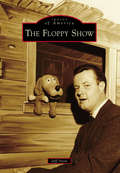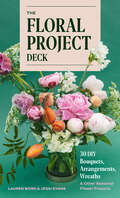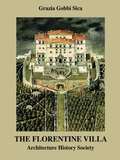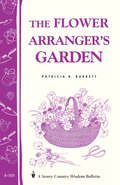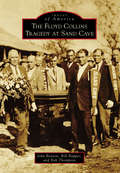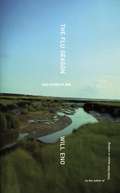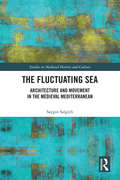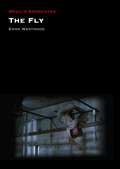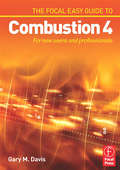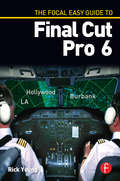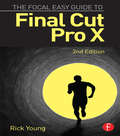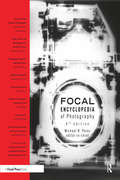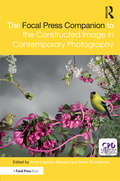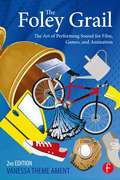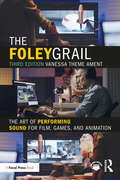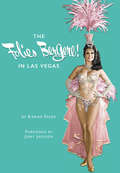- Table View
- List View
The Floppy Show
by Jeff SteinIn 1957, WHO-TV asked staff performer Duane Ellett to come up with an idea to help teach children how to better care for their pets. Ellett created Floppy, a high-voiced beagle dog puppet that became his sidekick for the next 30 years. Together, the iconic duo made 200 personal appearances every year at community festivals and events. The Floppy Show aired weekday afternoons in part of four decades, featuring a live studio audience of children telling Floppy riddles, beeping his nose for luck, and watching cartoons. On weekends, the duo appeared in a variety of programs over time, from the S.S. Popeye in earlier years to The Floppytown Gazette in the 1980s, featuring Floppy and other puppets Ellett created. Thousands of Iowans outside of Des Moines discovered the duo from their performances at the Iowa State Fair. Even now, 30 years after their last television appearance, Duane and Floppy still hold a warm place in the hearts of baby boomers across America.
The Floral Project Deck: 30 DIY Bouquets, Arrangements, Wreaths & Other Seasonal Flower Projects
by Lauren Work Jessi EvansPacked with easy-to-follow instructions, gorgeous photographs, and recipes for 30 breathtaking floral arrangements, this handy DIY deck gives you the power to create floral displays that will elevate any occasion.Design stunning floral arrangements for holiday hosting, special occasions, gifting to friends, or simply making any day a little brighter and more beautiful. This easy-to-use deck includes 30 how-to recipe cards for creating gorgeous seasonal arrangements, including: A lush harvest tablescape A welcoming holiday wreath A summer-sweet centerpiece for al fresco dining A “grateful guest” bundle to present to your host Bouquets for Valentine's Day, Mother’s Day, and more A petite booklet outlines the basics—essential tools and a flower glossary for easy reference—to get you started, and each card features a photo of a flower arrangement and step-by-step instructions. The Floral Project Deck makes it easier than ever for flower lovers to make their own gorgeous designs at home.FLOWER ARRANGING FOR ALL: These flower recipes are uncomplicated, and every card provides clear instructions and a photo, ensuring any hobbyist can easily recreate these beautiful bouquets and bundles regardless of skill level. FLORAL ART THROUGHOUT THE YEAR: A simmer pot to welcome the new year, a pastel bouquet for Mother's Day, a charming flower crown to mark the summer solstice, a colorful kale autumnal centerpiece, a festive holiday wreath: These 30 floral projects incorporate seasonal blooms, ensuring you have a gorgeous arrangement for every time of year. GIFT FOR FLOWER LOVERS: With beautiful flower photography and an eye-catching package, The Floral Project Deck makes a lovely companion for flower enthusiasts and a perfect present for any celebratory occasion.Perfect for: Anyone who likes to arrange flowers Novice or professional florists Gardeners, flower lovers, and nature enthusiasts People who buy blooms at the farmer’s market or grocery store Gift-giving for Mother's Day, birthday, housewarming, or holiday
The Florentine Villa: Architecture History Society (The Classical Tradition in Architecture)
by Grazia Gobbi SicaScholarly and innovative with visually stunning line drawings and photographs, this volume provides readers with a compelling record of the unbroken pattern of reciprocal use and exchange between the countryside and the walled city of Florence, from the thirteenth century up to the present day. Defying the traditional and idealized interpretation of the Florentine Villa, the author: analyzes the economic factors that powered the investment in and building of country houses and estates from the early Renaissance times onwards, as well as the ideology and the architectural and literary models that promoted the Florentine villa explores the area between Florence and Sesto in its history, morphology and representation looks at the villas existing in the area. A contribution to the protection of the important cultural heritage of the landscape in the Florentine area and of its historic buildings, villas and gardens, this study makes engaging reading, not only for scholars and students in architecture, landscape design and social history, but also for the well informed reader interested in art, architecture and gardens.
The Flower Arranger's Garden: A Storey's Country Wisdom Bulletin (Storey Country Wisdom Bulletin Ser.)
by Patricia R. BarrettSince 1973, Storey's Country Wisdom Bulletins have offered practical, hands-on instructions designed to help readers master dozens of country living skills quickly and easily. There are now more than 170 titles in this series, and their remarkable popularity reflects the common desire of country and city dwellers alike to cultivate personal independence in everyday life.
The Flower Art of Japan
by Mary AverillThis profusely illustrated book by an expert in the Japanese art of flower arrangement surveys many techniques, from ancient to modern. American writer Mary Averill (1866–1954) offers practical advice drawn from her direct experience of the importance of flowers to daily life in Japan. More than 80 drawings depict the finer details of choosing flowers, proper use of foliage, combining different varieties of flowers, and the symbolism involved. Averill, also known as Kwashinsai Kiyokumei, was proficient in the Japanese art of ikebana and the author of Japanese Flower Arrangement Applied to Western Needs. Averill embraced all the varied schools of Japanese flower arrangement, focusing on those producing the most attractive decorative effects and those exhibiting natural taste. She provides both novices and experienced flower arrangers with an informed and accessible guide to incorporating the beauty of this timeless art form into their everyday lives.
The Flower Book: Let the Beauty of Each Bloom Speak for Itself
by Rachel SiegfriedExplore 60 flowers, bloom by bloom, in stunning portraiture with lush macrophotography that showcases the details of each flower, and learn how to arrange flowers with different styles, tips, and techniques.Intimate portraits of each flower include quick-reference profiles with tips for choosing the best blooms, care for cut stems, arranging recommendations, colors, shapes, and even growing tips to transform the home, from yard to tabletop. Study a multitude of blooms, from the amaryllis in spring, snapdragon in summer, and dahlia in fall to tropical wonders such as orchids and African lilies.The Flower Book spotlights 30 sample floral arrangements that show how to design and build custom floral arrangements using featured blooms. Plus, a step-by-step techniques section walks beginners through the basics of foliage and fillers, bouquets, and arrangements to make this book as practical as it is beautiful.A perfect gift for anyone who loves flowers, The Flower Book celebrates all the wonderful qualities of flowers—their sheer beauty, infinite variety, and power to evoke admiration—bloom by exquisite bloom.
The Flower Chef: A Modern Guide to Do-It-Yourself Floral Arrangements
by Carly CylinderTHE FLOWER CHEF is a modern, comprehensive guide to floral design that caters to all readers--from beginners who have never worked with flowers before and are looking for a new creative outlet, to decorators, party planners and photographers looking to liven up their spaces. Even professionals will find ways to update their techniques! This book teaches you everything you need to know about flower arranging including tips on how to buy and care for flowers, how to cut and prepare them, and how to use floral foam, vases, and various other decorative elements in your arrangements. Filled with beautiful photographs and easy-to-follow instructions on how to create over 80 different arrangements, this is the go-to guide to floral design that every flower lover will want to add to their collection.
The Flower Painter's Essential Handbook: How to Paint 50 Beautiful Flowers in Watercolor
by Jill BaysHelp your artistic talent bloom by capturing the beauty of flowers with your brushstrokes from realistic close-ups to impressionistic landscapes. From Agapanthus to Water Lily, this unique artist&’s reference provides easy-to-follow, plant-specific information on how to paint fifty of today&’s most popular flowers. • Learn to draw each basic flower shape and then paint a single detailed bloom • Gain full, practical guidance for painting each flower through clear illustrations, step-by-step instruction, and the essential color palette • Refer to Jill&’s beautiful finished paintings for further inspiration • Use the indispensable introduction to discover basic flower painting materials, techniques and color considerations The must-have practical reference that no flower painter can be without!
The Flower Workshop
by Julie Michaels Ariella ChezarWritten by a celebrated floral designer and lavishly illustrated with full-color photography, this book not only provides step-by-step instructions for 50 stunning floral projects from simple to spectacular, but also equips readers with the skills to customize arrangements at home. Whether hosting a party, helping out with a friend's wedding, or wishing to incorporate the beauty of flowers into everyday life, The Flower Workshop allows you to create dazzling arrangements that go beyond merely pretty and into realms of the dramatic, the unexpected, and sometimes even the magical. Written by a celebrated floral designer and lavishly illustrated with full-color photography, this book not only provides step-by-step instructions for more than forty-five stunning floral projects from simple to spectacular, but also equips you with the skills to customize arrangements at home. Known for her hands-on flower workshops at FlowerSchool New York, Ariella Chezar walks you through the nuts and bolts of creating a variety of small flourishes, tonal arrangements, branch arrangements, handheld bouquets, wreathes, garlands, grand gestures, and more--all accompanied by detailed photography. Chezar offers advice and philosophy on everything from texture and color to foliage and containers, providing an overall approach to living and working with flowers, with an eye toward fresh, local, wild, seasonally influenced floral design. For every occasion, from relaxed and simple to lavish and monumental, The Flower Workshop celebrates the special moments in your life with glorious, fragrant floral arrangements and enhances your surroundings with abundant beauty.From the Hardcover edition.
The Flowering: The Autobiography Of Judy Chicago
by Judy ChicagoIn this provocative and resonant autobiography, world-renowned artist and feminist icon Judy Chicago reflects on her extraordinary life and career. Judy Chicago is America’s most dynamic living artist. Her works comprise a dizzying array of media from performance and installation to the glittering table laid for thirty-nine iconic women in The Dinner Party (now permanently housed at the Brooklyn Museum), the groundbreaking Birth Project, and the meticulously researched Holocaust Project. She designed the monumental installation for Dior’s 2020 Paris couture show and, in 2019, established the Judy Chicago Portal, which will help to accomplish her lifelong goal of overcoming the erasure that has eclipsed the achievements of so many women. The Flowering is her vivid and revealing autobiography, fully illustrated with photographs of her work, as well as never-before-published personal images and a foreword by Gloria Steinem. Chicago has revised and updated her earlier, classic works with previously untold stories, fresh insights, and an extensive afterword covering the last twenty years. This powerful narrative weaves together the stories behind some of Chicago’s most significant artworks and her journey as a woman artist with the chronicles of her personal relationships and her understanding, from decades of experience and extensive research, of how misogyny, racism, and other prejudices intersect to erase the legacies of artists who are not white and male while dismissing the suffering of millions of creatures who share the planet. With the first career retrospective of her work forthcoming at the de Young Museum in 2021, Chicago reinforces her message of resilience for a new generation of artists and activists. The Flowering is an essential read for anyone interested in making change.
The Floyd Collins Tragedy at Sand Cave (Images of America)
by John Benton Bob Thompson Bill NapperFloyd Collins is perhaps the most famous person you have probably never heard of. Collins was a Kentucky cave explorer who was trapped for more than two weeks during the winter of 1925 in a cave located within the boundaries of what is now Mammoth Cave National Park. Collins had no fear of exploring the most difficult cave passages, and few people could match his persistence and endurance. The story of Floyd Collins becoming trapped, then buried alive, and ultimately dying alone in a cave held a powerful grip on the hearts and minds of people the world over. The resulting media coverage put Mammoth Cave on the map and helped usher the actual designation of Mammoth Cave as a national park. His explorations laid the foundation for others to later discover that Mammoth Cave was the longest cave in the world.
The Flu Season and Other Plays
by Will Eno"Will Eno is one of the finest younger playwrights I have come across in a number of years. His work is inventive, disciplined and, at the same time, wild and evocative. His ear is splendid and his mind is agile."--Edward Albee "An original, a maverick wordsmith whose weird, wry dramas gurgle with the grim humor and pain of life. Eno specializes in the connections of the unconnected, the apologetic murmurings of the disengaged."--Guardian Winner of the 2004 Oppenheimer Award for best New York debut by an American playwright, The Flu Season is a reluctant love story, in spite of itself. Set in a hospital and a theater, it is a play that revels in ambivalence and derives a flailing energy from its doubts whether a love story is ever really a love story. Will Eno has been called "a Samuel Beckett for the Jon Stewart generation" (The New York Times)--he is a playwright with an extraordinary voice and a singular theatrical vision. Also included in this volume are Tragedy: A Tragedy and Intermission.
The Fluctuating Sea: Architecture and Movement in the Medieval Mediterranean (Studies in Medieval History and Culture)
by Saygin SalgirliThis volume fluctuates between conceptualizations of movement; either movements that buildings in the medieval Mediterranean facilitated, or the movements of the users and audiences of architecture. From medieval Anatolia to Southern France and the Genoese colony of Pera across Constantinople, The Fluctuating Sea investigates how the relationship between movement and the experiences of a multiplicity of users with different social backgrounds can provide a new perspective on architectural history. The book acknowledges the shared characteristics of medieval Mediterranean architecture, but it also argues that for the majority of people inhabiting the fragmented microecologies of the Mediterranean, architecture was a highly localized phenomenon. It is the connectivity of such localized experiences that The Fluctuating Sea uncovers. The Fluctuating Sea is a valuable source for students and scholars of the medieval Mediterranean and architectural history.
The Fluid Nature of Being: Embodied practices for healing and wholeness
by Linda HartleyThe Fluid Nature of Being is a collection of writings by practitioners of Integrative Bodywork & Movement Therapy (IBMT), an approach to somatic movement education and therapy. The cultivation of consciously embodied movement is at the heart of somatic movement practice. Through embodiment practices, soma - the subjectively experienced sense of embodied self - becomes a vital, living reality and a foundation through which healthy relationship to others, to Nature, and to life as a whole can be nourished.The book describes the practice, thinking, research and creative work of twenty-one IBMT practitioners. Each has also trained in other disciplines and their writing weaves together their broader learning, passion and professional practice within the IBMT approach to somatic work. In this volume we offer a collection of expressions with a rich diversity of themes and styles, bringing these voices from the next generation of somatic movement practitioners, writers and leaders to a wider audience.The book covers topics such as IBMT in therapy, education, early years learning, dance and theatre; the integration with psychotherapy, psychoanalytic thinking, and somatic trauma therapy; and the connection between individual healing and the healing of the Earth and Nature during this time of planetary crisis.There are many aspects of IBMT practice described in this book that are shared with somatic practices in general, though there are also aspects which are specific to this approach. IBMT uniquely integrates in-depth studies in Somatic Psychology and the Discipline of Authentic Movement into a foundation of Body-Mind Centering® training. At the core of the practice is the quest to deepen connection with self, and from there, connection with others and the world around us.
The Fly (Devil's Advocates)
by Emma WestwoodIt's not often that a remake outshines its original but David Cronenberg's "reimagining" of The Fly (1986) is one of those rare exceptions. Equal parts horror, science fiction, and romance, The Fly takes the premise of its 1958 original—a man unintentionally fusing with a housefly during an experiment in teleportation—and reinterprets the plot as a gradual cellular metamorphosis between these two organisms.This book teases out the intricate DNA of The Fly and how it represents the personalities of many authors, including a distinguished history of Man-as-God tales stretching back to Mary Shelley's Frankenstein (1818). Drawing from interviews with cast, crew, film commentators, and other filmmakers, Emma Westwood interlaces the "making of" travails of The Fly with why it is one of the most important examples of master storytelling ever committed to screen.
The Focal Easy Guide to Combustion 4: For New Users and Professionals
by Gary M DavisSoftware programs are complex, the books that explain them shouldn't be. This thoroughly illustrated, full-color guide explains everything you need to know to get up and running quickly with Combustion. Get a jump-start learning the major features or the software without bogging you down with unnecessary detail.The author shares his professional insight and extensive training experience to ensure you'll get the most out of all the professional paint, animation, editing and 3D compositing tools Combustion offers. Also featured are many workflow tips which show how to tap into the full power of Combustion 4 in your effects and motion graphics work.For useful tips and tutorials, visit the book's companion site at www.focalpress.com/companions/0240520106
The Focal Easy Guide to Final Cut Pro 6
by Rick YoungSoftware packages are complex. Software books don't need to be. Simplify your life with The Focal Easy Guide to Final Cut Pro! This concise, full-color book lives up to its name by paring down the software to its essentials. You learn the key features and essential workflow to get you up and running in no time. With this book you can start cutting immediately, whatever you edit, whatever the format. This is an ideal introduction whether you are a professional moving over to Final Cut Pro from another package or system, a new user, or just someone who wants to get the best results from Final Cut Pro, fast!
The Focal Easy Guide to Final Cut Pro 7
by Rick YoungRick Young's Easy Guide to Final Cut Pro 7 is the ultimate guide to getting up and running with Apple's professional editing software. Full of information relevant to both new users and professionals, this book wastes no time in teaching all the vital knowledge needed to edit your project from start to finish using Final Cut Pro. All the key features and essential techniques are presented in this easy to understand, full-color book. When time is of the essence, less is more. Learn invaluable workflow tips which show you how to tap into the full power of Final Cut Pro, whichever version of the program you are using. All the essential areas are covered: *System Set-up * Capture * Editing * Audio Mixing * Effects * Output * Media * Management, and more This latest edition also features new sections specific to Final Cut Pro 7, including expanded ProRes support, improved markers, global transitions, alpha transitions, automatic transfer of file-based media to hard drive, and easy export to DVD, Blu-Ray, iPod, iPhone, and Apple TV.Praised by industry professionals, educators, and independent filmmakers, the Easy Guide to Final Cut Pro has earned a solid reputation as being the absolute best book on the market for those wishing to get up to speed with Final Cut Pro quickly.
The Focal Easy Guide to Final Cut Pro X
by Rick YoungMaster invaluable workflow tips that will allow you to tap into the full power of Final Cut Pro X and achieve results quickly, regardless of your skill level. Rick Young’s Focal Easy Guide to Final Cut Pro X, Second Edition is the ultimate mentor for getting up and running with Apple’s professional editing software. In this step-by-step, full-color guide, Young clearly explains the key concepts and vital knowledge you need to edit your project from start to finish, providing clear, time-saving instruction on producing and outputting using Final Cut Pro X. This new edition has been updated to include: A thorough introduction to Final Cut Pro X and the philosophy by which the software works Coverage of the complete postproduction process, including setup, importing, editing, audio, effects, and output Additional sections on Multicam Editing, working with Proxies, and effective media management of Libraries Instruction on encoding, distributing, and archiving your completed projects A companion website (www.focalpress.com/9781138785533) featuring downloadable video footage that you can edit using the techniques covered in the book Packed with tutorials and real-world examples, The Focal Easy Guide to Final Cut Pro X, Second Edition will take you through the ins and outs of the software and have you editing and outputting your movies in no time! Written for Final Cut Pro X version 10.1.3 and beyond.
The Focal Encyclopedia of Photography: From The First Photo On Paper To The Digital Revolution
by Michael R. PeresThis volume is a complete revision of the 1996 third edition, shares the ever-changing breadth of photographic topics with a special emphasis on digital imaging and contemporary issues. Produced by an international team of photographic and imaging experts with collaboration from the George Eastman House (the world's oldest photography museum), this fourth edition contains essays and photographic reproductions sharing information where photography and imaging serve a primary role, ranging from the atomic to the cosmic.
The Focal Press Companion to the Constructed Image in Contemporary Photography
by Marni Shindelman Anne Leighton MassoniThis compendium examines the choices, construction, inclusions and exemptions, and expanded practices involved in the process of creating a photograph. Focusing on work created in the past twenty-five years, this volume is divided into sections that address a separate means of creating photographs as careful constructs: Directing Spaces, Constructing Places, Performing Space, Building Images, and Camera-less Images. Introduced by both a curator and a scholar, each section features contemporary artists in conversation with curators, critics, gallerists, artists, and art historians. The writings include narratives by the artist, writings on their work, and examinations of studio practices. This pioneering book is the first of its kind to explore this topic beyond those artists building sets to photograph.
The Fold: From Your Body to the Cosmos
by Laura U. MarksIn The Fold, Laura U. Marks offers a practical philosophy and aesthetic theory for living in an infinitely connected cosmos. Drawing on the theories of Leibniz, Glissant, Deleuze, and theoretical physicist David Bohm—who each conceive of the universe as being folded in on itself in myriad ways—Marks contends that the folds of the cosmos are entirely constituted of living beings. From humans to sandwiches to software to stars, every entity is alive and occupies its own private enclosure inside the cosmos. Through analyses of fiction, documentary and experimental movies, interactive media, and everyday situations, Marks outlines embodied methods for detecting and augmenting the connections between each living entity and the cosmos. She shows that by affectively mediating with the ever-shifting folded relations within the cosmos, it is possible to build “soul-assemblages” that challenge information capitalism, colonialism, and other power structures and develop new connections with the infinite. With this guide for living within the enfolded and unfolding cosmos, Marks teaches readers to richly apprehend the world and to trace the processes of becoming that are immanent within the fold.
The Foley Grail: The Art of Performing Sound for Film, Games, and Animation
by Vanessa Theme AmentMaster classic and cutting-edge Foley techniques that will allow you to create rich, convincing sound for any medium, be it film, television, radio, podcasts, animation, or games. In The Foley Grail, Second Edition award-winning Foley artist Vanessa Theme Ament teaches you how Foley is designed, crafted, and edited for any project, right down to the nuts and bolts of spotting, cueing, and performing sounds. Various renowned sound artists provide a treasure trove of shortcuts, hot tips, and other tricks of the trade. This new edition features: Entirely new chapters dedicated to Foley in games, television, broadcasting, and animation, as well as what is new in sound for media education All new sound "recipes" that include proven Foley methods you can immediately use on your own projects New case studies from well-known films, shows, games, and animations Interviews with current sound artists from across the globe An extensive companion website (www.focalpress.com/cw/ament) featuring video demonstrations of Foley artists at work, video tutorials of specific Foley techniques, lectures from the author, and much more
The Foley Grail: The Art of Performing Sound for Film, Games, and Animation
by Vanessa Theme AmentThis book teaches you how to master classic and cutting edge Foley techniques in order to create rich and convincing sound for any medium, be it film, television, radio, podcasts, animation, or games. Award-winning Foley artist Vanessa Theme Ament demonstrates how Foley is designed, crafted, and edited for any project, down to the nuts and bolts of spotting, cueing, and performing sounds. Various renowned sound artists provide a treasure trove of indispensable shortcuts, hot tips, and other valuable tricks of the trade. This updated third edition features the following: New chapters dedicated to Foley in games, television, broadcasting, and animation, as well as what is new in sound for media education A multitude of sound "recipes" that include proven Foley methods you can immediately use on your own projects A diverse range of case studies from well-known films, shows, games, and animation Interviews with current sound artists from around the world By exploring the entire audio post-production process, this book provides you with an excellent understanding of where Foley fits in the business of filmmaking and is a perfect guide for both newcomers and experienced sound designers wanting to learn more about this art. Accompanying the book are online resources featuring video demonstrations of Foley artists at work, video tutorials of specific Foley techniques, lectures from the author and more.
The Folies Bergere in Las Vegas
by Karan Feder Jerry JacksonDebuting at the Tropicana Hotel on Christmas Eve, 1959, at a reported cost of one quarter-million dollars (over two million in today's dollars), the Folies Bergere stage show featured a cast of "eighty stars" and promised an elegant evening of sensual entertainment complete with sensational song and dance numbers, curious novelty acts, and exquisite leggy showgirls. Imported directly from Paris, the iconic French production, famed for its elegant and chic legacy, was a mainstay on the Las Vegas Strip for nearly half a century. A 1959 Las Vegas Sun newspaper article portends the significant role that the Folies Bergere would play in the city's history: "From beginning to end this is the most dazzling entertainment which any city has been privileged to see. It's saucy, piquant and racy in the splendidly provocative French way. Las Vegas, the entertainment capital of the world, is now no idle boast."
